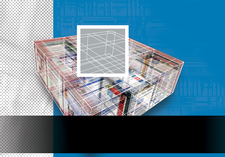eyeOS and Ulteo desktops
In the Cloud

The eyeOS and Ulteo online desktops offer different approaches to a web-based desktop, but they are both worth a closer look if you are in the market for a computing environment in the cloud.
Today, when a pervasive and reliable Internet connection is no longer just a dream, the idea of using web-based applications makes a lot of sense. Google Docs and the Zoho office suite are prime examples of solutions for users who prefer to move their daily computing from the desktop to the cloud. But instead of replacing individual applications with their web-based equivalents, you can opt for a service that offers you a full-blown desktop that contains everything you need to work on your files and documents and collaborate with other users. In this article, I take a look at two such solutions: the eyeOS and Ulteo online desktops.
eyeOS
EyeOS [1] is not the only web-based operating system out there, but it's probably one of the most mature and feature-rich options to offer a complete computing environment accessible from your browser. With several ways to get your own eyeOS installation up and running, the easiest is to use the hosted version of the system [2] provided and maintained by the eyeOS project team. The advantages of this solution are obvious – you don't have to install anything, your system is automatically upgraded to the latest version, and you don't have to worry about maintenance. However, the hosted version is designed mainly for demonstration purposes and not for production use. Another solution is to create your own eyeOS installation on a hosted web space. This way, you retain full control over your system without running and maintaining the server yourself. Because eyeOS has its own virtual file system, it doesn't require a database back end, which means that the only thing you need is a server with support for PHP5.
EyeOS comes with its own installer, which makes the entire installation and configuration process a breeze. After you download the latest version of eyeOS, you should unpack the downloaded archive and move it to your server. Next, point your browser to http://yourserver/eyeOS/install.php and the installation wizard guides you through the rest of the process. Finally, you can also install eyeOS on your own server, which not only gives you absolute control but also allows you to integrate eyeOS with OpenOffice.org if you want to add the ability to open and save documents in the OpenOffice.org or Microsoft Office formats. Making eyeOS work with OpenOffice.org does require some manual tweaking, but the entire procedure is pretty straightforward and is described in the accompanying README.txt file.
[...]
Buy this article as PDF
(incl. VAT)
Buy Linux Magazine
Subscribe to our Linux Newsletters
Find Linux and Open Source Jobs
Subscribe to our ADMIN Newsletters
Support Our Work
Linux Magazine content is made possible with support from readers like you. Please consider contributing when you’ve found an article to be beneficial.

News
-
Parrot OS Switches to KDE Plasma Desktop
Yet another distro is making the move to the KDE Plasma desktop.
-
TUXEDO Announces Gemini 17
TUXEDO Computers has released the fourth generation of its Gemini laptop with plenty of updates.
-
Two New Distros Adopt Enlightenment
MX Moksha and AV Linux 25 join ranks with Bodhi Linux and embrace the Enlightenment desktop.
-
Solus Linux 4.8 Removes Python 2
Solus Linux 4.8 has been released with the latest Linux kernel, updated desktops, and a key removal.
-
Zorin OS 18 Hits over a Million Downloads
If you doubt Linux isn't gaining popularity, you only have to look at Zorin OS's download numbers.
-
TUXEDO Computers Scraps Snapdragon X1E-Based Laptop
Due to issues with a Snapdragon CPU, TUXEDO Computers has cancelled its plans to release a laptop based on this elite hardware.
-
Debian Unleashes Debian Libre Live
Debian Libre Live keeps your machine free of proprietary software.
-
Valve Announces Pending Release of Steam Machine
Shout it to the heavens: Steam Machine, powered by Linux, is set to arrive in 2026.
-
Happy Birthday, ADMIN Magazine!
ADMIN is celebrating its 15th anniversary with issue #90.
-
Another Linux Malware Discovered
Russian hackers use Hyper-V to hide malware within Linux virtual machines.

